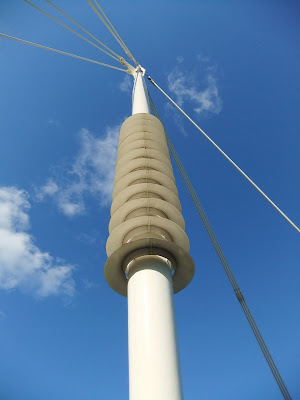
Ever wondered what the Finish line of the great North Run looks like at South Shields - well this is the view that awaits me in 12 weeks and it's a familiar one as I will be completing my 30th GNR in September.
My first run was in 1981 when i managed a time of 1hour 59 minutes ..... as you can see 30 years on and I'm still getting faster !!!
Please check out my sponsor site which isin aid of the Percy Hedley School in North Tyneside.
Percy Hedley School specialises in working with three distinct groups of children. Our work with children who have cerebral palsy is based on Conductive Education as practised at the Peto Institute in Budapest. Specialist teachers and therapists provide an integrated approach to working with children who have speech, language and communication difficulties and complex difficulties including dyspraxia, dyslexia and ADHD (attention deficit hyperactivity disorder). The school has considerable experience of working with children on the autistic spectrum who show the potential to access a group approach with support. Following our merger with Northern Counties School we have launched a new, highly specialised education provision for children with hearing impairment based at our secondary school provision.
Northern Counties School has a national reputation for excellent practice and provides education, therapy and care for children with hearing and visual impairment, complex needs and autism. The school specialises in a total communication approach.
Northern Counties School has a national reputation for excellent practice and provides education, therapy and care for children with hearing and visual impairment, complex needs and autism. The school specialises in a total communication approach.
























